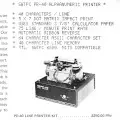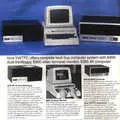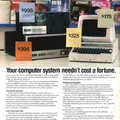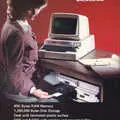
SWTPC Advert - December 1976
From Popular Electronics
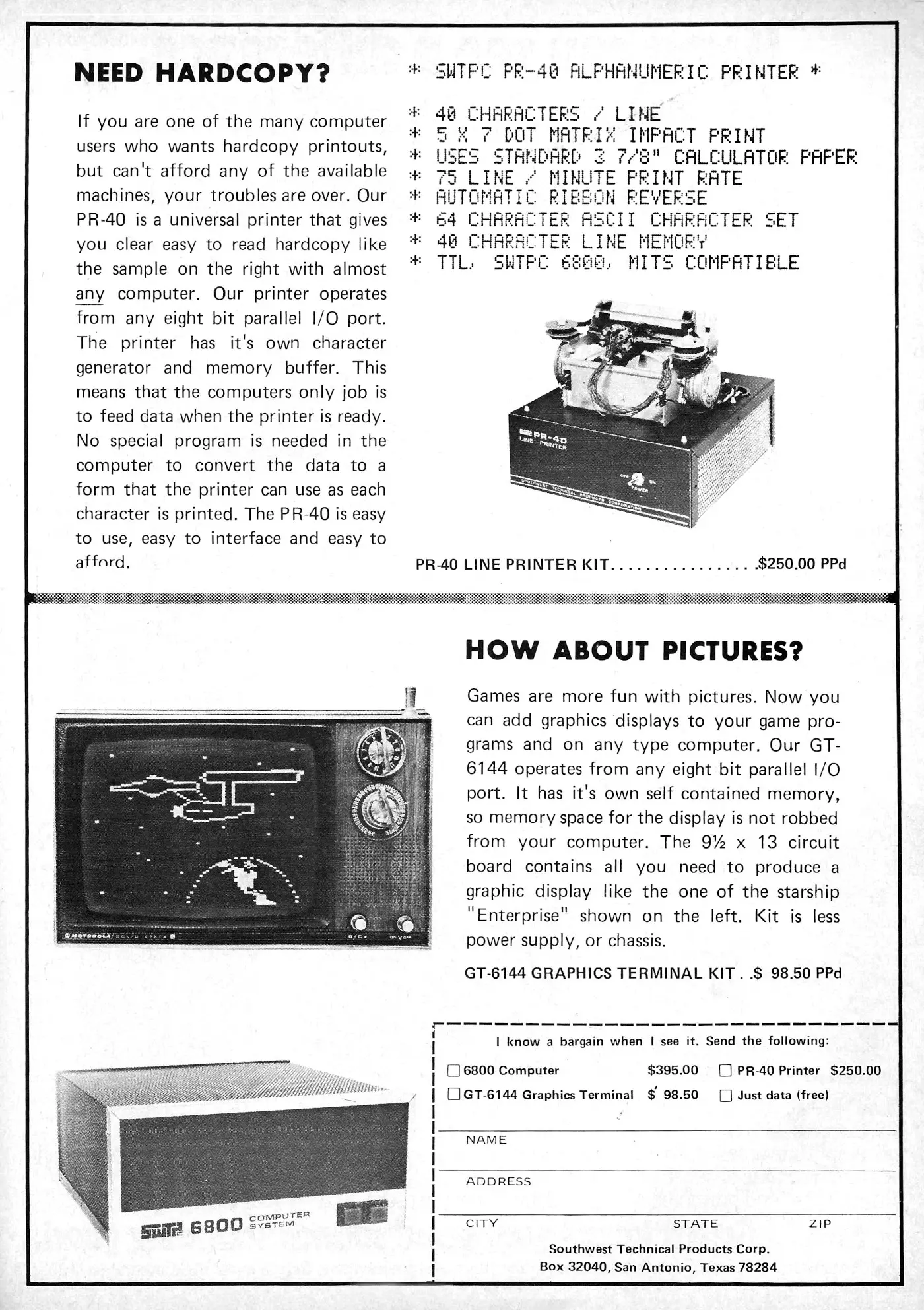
SWTPC: Need hardcopy? How about pictures?
This is an early computer-related advert from SWTPC, the San Antonio, Texas, company that had been founded in 1967 out of the earlier Daniel E Meyer Company business and which specialised in selling electronics kits in its early history[1].
It's for a completely bizarre-looking dot matrix printer, the SWTPC PR-40 "Alphanumeric Printer".
At the time of this advert, dot-matrix printers had only been around for a couple of years, with the first commercially successful one probably being DEC's LA36 from 1974[2].
SWTPC's version looks far more like an early cyclinder phonograph or some kind of telephone than a recognisable printer. It was based upon receipt-printer technology, and it looks it, right down to the 3⅞" calculator/till-roll paper the printer used.
Retailing for $250, or about £2,090 in 2026, it did at least run from a generic 8-bit parallel port, so it was fairly universal with the advert claiming MITS/Altair, SWTPC's own 6800, and TTL compatibility.
Here, TTL was not a manufacturer but actually meant Transistor-Transistor Logic, meaning that hobbyists could build their own printer interfaces if they fancied it.
The second half of the advert is for the GT-6144 graphics terminal, available for $98.50, or about £730 in 2026.
It's not actually the TV shown, but was a 9½" x 13" board which plugged into an available parallel port, thus treating the display more like a printer.
Along with these two add-ons is also SWTPC's original 6800 computer system, first launched in November 1975 and based on the Motorola processor of the same name.
It was around until at least 1978 and in 1976 was retailing for $395 (about £3,140 in 2026).
This compared well against, for instance, MITS's Altair 680 - also based on the 6800 - which retailed for $625 plus tax, or about £4,720 in 2026.
The VDU kit was available in the UK and had been discovered by time-sharing bureau agent John Burnett in May 1976.
A direct result of that encounter was the setting up of Computer Workshop, which became the first computer company of its type anywhere in the UK or Europe. Burnett explained:
"I used to go around showing the VDU kit to people, walking into expensive computer showrooms and hooking it into the cables there. It never failed to work, though. The idea evolved from selling a service to emulating the burgeoning microcomputer shops in the States - although in the end we didn't exactly do that. Instead we became a specialist supplying South West Technical Products goods".
The company was established in Fulham, and turned over £2,000-worth of the VDU kits in its first month.
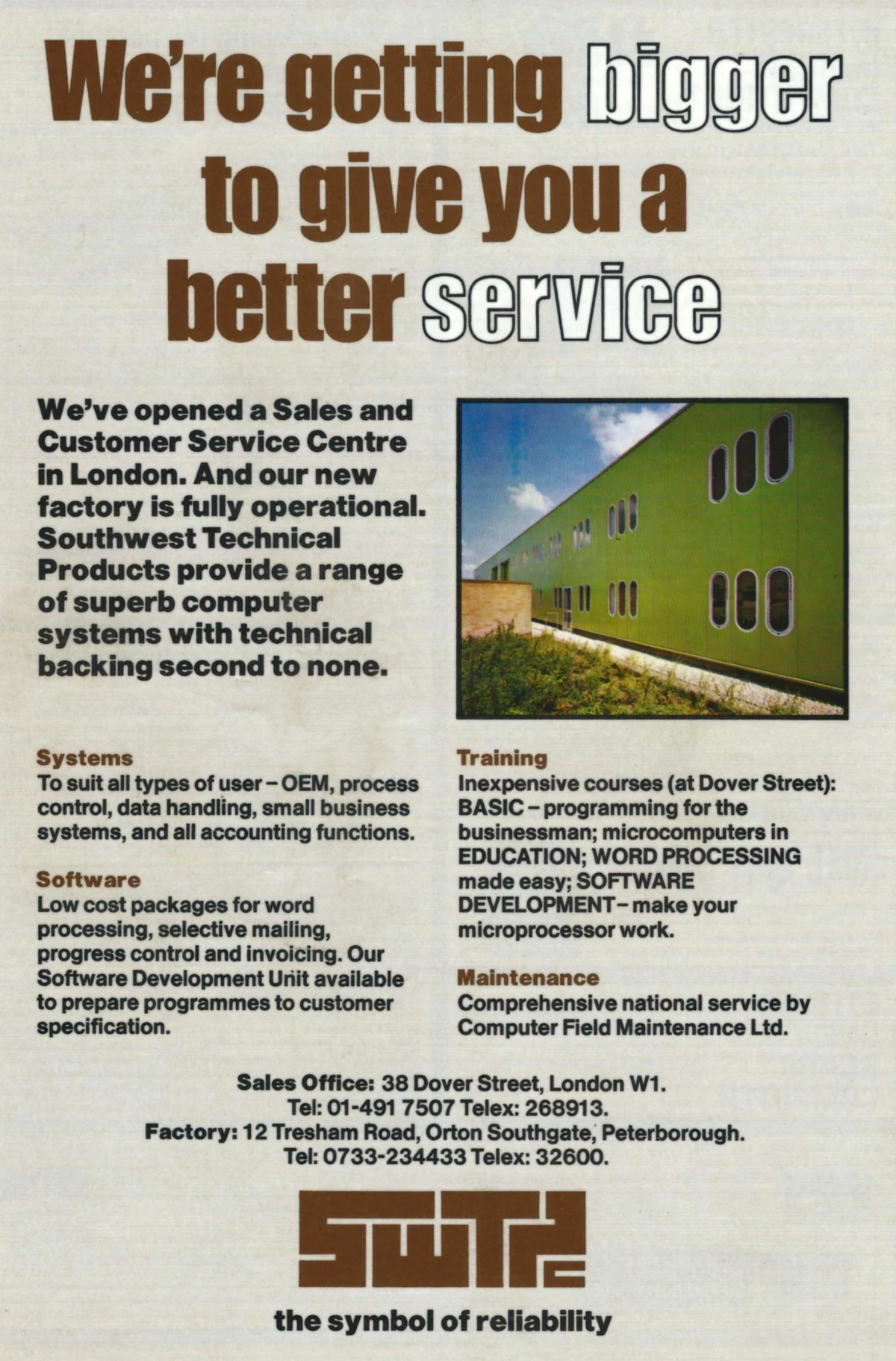
An advert showing SWTPC UK's change of location to Dover Street, and its new factory in Orton Southgate, Peterbough - said to have been painted in a "sickly shade of green". From Practical Computing, November 1978.
By 1978, it had moved to much fancier offices near Mayfair in London and was turning over £75,000 a month. It had become the biggest SWTPC customer in the entire country, and so entered discussions with SWTPC in the US about setting up a UK factory in order to beat freight costs and various import tarrifs.
It would also help the company respond more rapidly to customer demands, as delays to shipments had already been a problem. Although back orders were down to around £40,000 by the autumn of 1978, they had been up to £150,000 the year before.
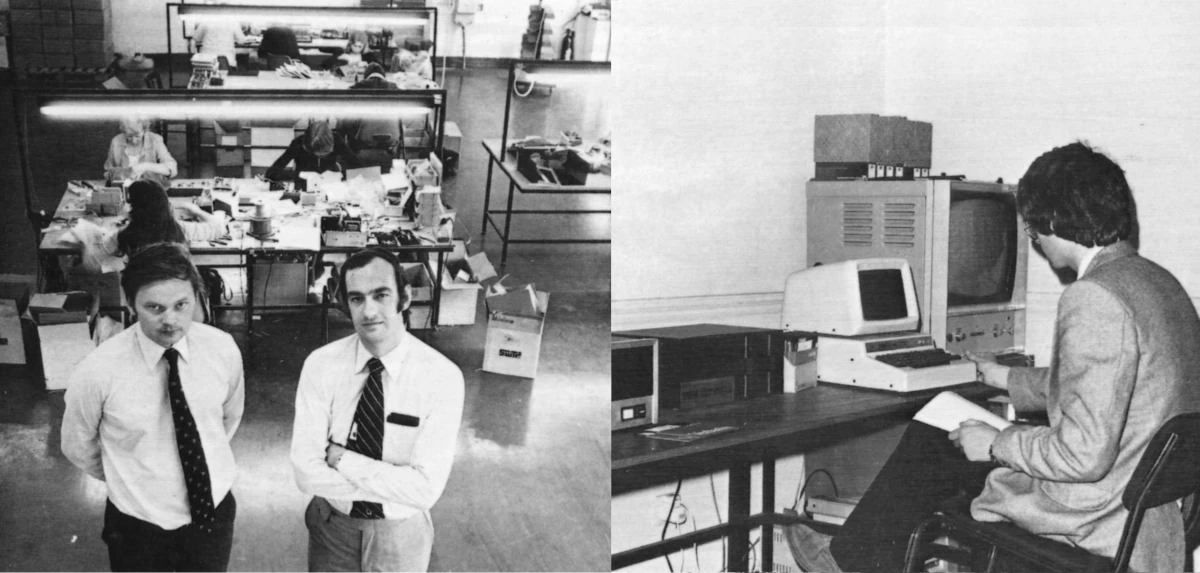
Left: John Burnett and his business partner Hugh Woodsend, in the Peterborough factory. Right: SWTP hardware in action. From Practical Computing, October 1978
The end result was a factory in Peterborough, which was 50% financed by SWTP of the US, effectively taking over Computer Workshop Ltd, which by now was the retailing front-end of the US company in the UK.
It was the first manufacturing facility to be set up in the UK by a US manufacturer.
The business kept the faith with SWTPC, with Burnett saying:
"We decided that to support a large number of different systems would weaken our support capability and we would never get to grips with every system. We felt it was the right decision to concentrate on SWTPC because it was the lowest-cost manufacturer in the equipment area and one of the largest".
Although apparently SWTPC was considered as "low cost", it was definitely not aiming at the hobbyist or home user, although removing the floppy disks from a system and replacing them with a tape recorder, reducing the amount of memory to 4K and buying it all as a kit could bring the cost below £1,000 or so. However, Burnett acknowledged:
"If you compare this to something like the PET of the Tandy TRS-80 which are completely integrated units, we can't really compete. To build PET-like systems from our equipment would cost more. But our is more flexible and you can expand it as much as you like. There is no difficulty at all; you can plug in any kind of terminal and add any cards you want[3]".
Date created: 30 July 2013
Last updated: 07 October 2025
Hint: use left and right cursor keys to navigate between adverts.
Sources
Text and otherwise-uncredited photos © nosher.net 2026. Dollar/GBP conversions, where used, assume $1.50 to £1. "Now" prices are calculated dynamically using average RPI per year.
